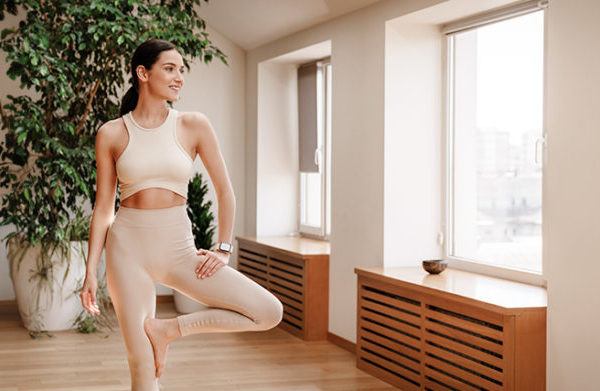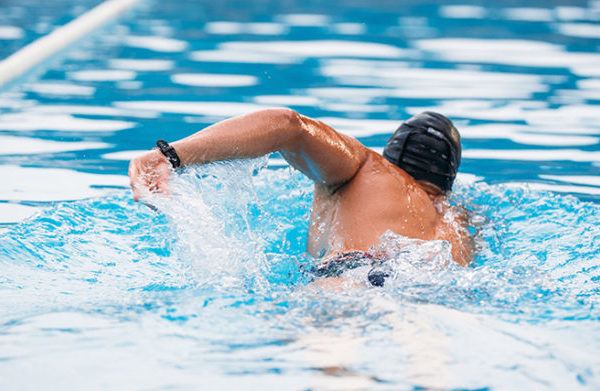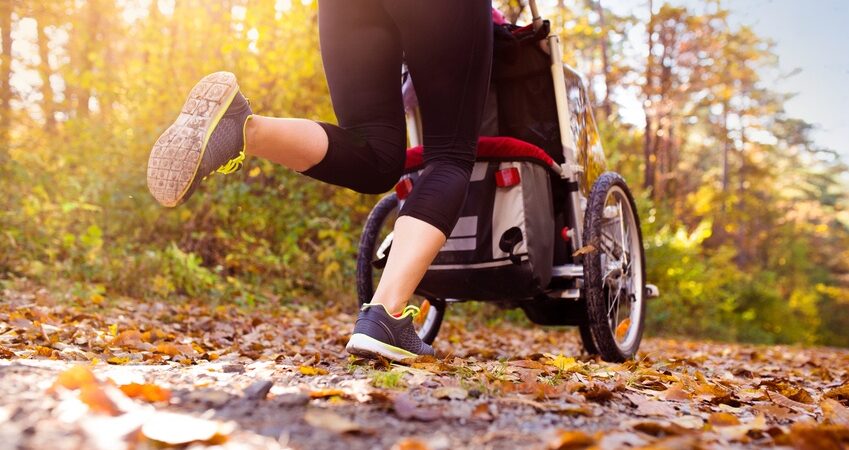
SHA Magazine Fitness
The best postpartum exercises
If you’ve had a baby recently and are wondering what the best way possible to get back into a fitness routine is, we’ve got some tips for you to get back into shape. Ideally, you would’ve kept active during your pregnancy, making it easier to recover post-partum and get fit again. However, these exercises are for all fitness levels.
It is important to note that each woman is different and each delivery experience is unique. Therefore, you have to follow your own rhythm and take your doctor’s advice into account. Essentially, your doctor will be able to tell you when your body is ready to start exercising again. Because every pregnancy and delivery is different, there is no one rule applies to all. If you’ve had a C-section for example, you usually have to wait around 3 months to be able to do any abdominal exercises as the muscles have been torn and need to get back into their original position.
Generally speaking, the average time you have to wait until you can start exercising again is 6 weeks after giving birth. However, this is something you will have to consult with your doctor and he/she will be able to advise what’s best for you. Having said that, the important thing is taking things a day at a time, not putting pressure on yourself and simply begin by incorporating exercise into your daily routine, little by little.
Walking
The best way to start getting active is by taking walks with your stroller. The first few weeks after having your baby, you’re going to be spending a lot of time indoors, therefore, take a moment of your day to go for a walk with your baby stroller. You’ll get some exercise in, some fresh air and vitamin D! Having to push the stroller adds extra cardio and that way you won’t have excuses not to exercise, as you can take your baby with you. Over time, try to increase the speed of your walk to increase the cardio.
We all know that mothers don’t dispose of a lot of free time, especially when they have a new born. Therefore, aside from going on daily walks, you can make the most of your baby’s nap times to do exercises at home which work with your own body weight and which don’t require equipment, aside from a yoga mat.
Kegel exercise
Whilst this may not be the conventional type of exercise, it’s equally as important following child birth. Your pelvic floor muscles, which support the uterus, bladder, small intestine and rectus, need to be strengthened.
In order to do kegel exercises, you first need to identify where your pelvic floor muscles are. The feeling that you get when you’re trying to hold in your urine, is the exact feeling you should get when you contract your pelvic floor muscles. Once you’ve identified that, you’re good to go!
To begin, contract your pelvic floor muscles for 5 seconds, and then rest for 5 seconds. Repeat this exercise four or 5 times in a row. Once you’ve mastered the technique, increase the time to 10 seconds.
Aim to do 3 sets of 10 exercises a day.
Bridge exercise (hip raises)
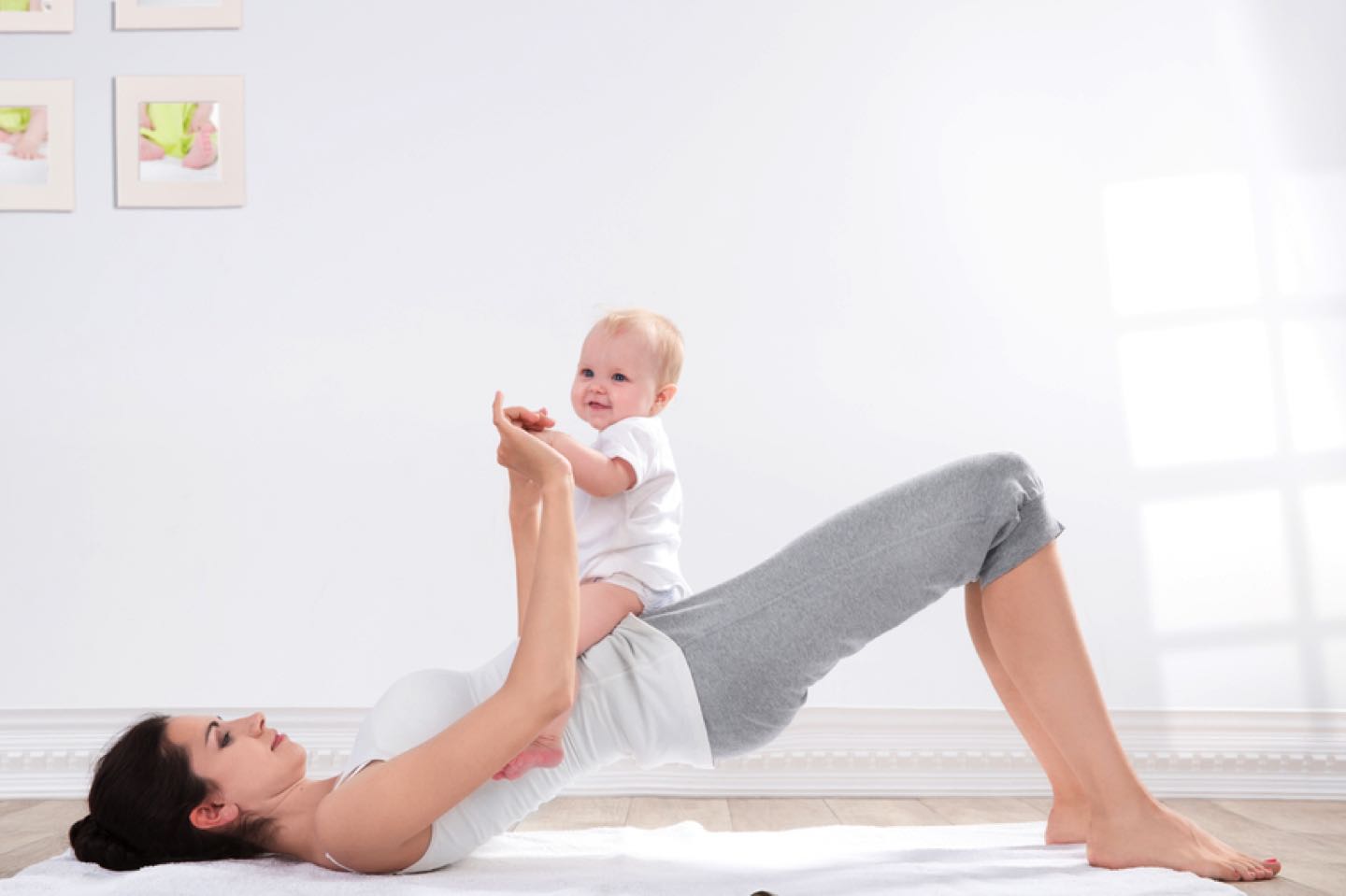
Hip raises are really easy to do anywhere and they’re perfect to strengthen the legs, glutes and pelvis. Lie on your back with your feet hip-width apart, knees bent with your feet positioned on the floor and your arms laying on your sides. Inhale first and on the exhale, draw your abs towards your spine, tilt your pelvis up and lift your hips off the floor into a bridge. Stay in this position for 10 seconds and slowly lower down your body to starting position.
Do 3 sets of 12 hip raises.
Note: you can also lift your arms up every time you do the bridge.
Squats
Squats are a good way of toning your legs, your pelvis and core. They can be done anywhere; therefore, there’s no excuse not to do them. Make sure to keep your back straight, tuck your tummy towards your belly and tighten your pelvis. This way you will work out your core, strengthen your pelvis and tone your legs and bum.
Do 3 sets of 12 squats.
Modified Push-ups
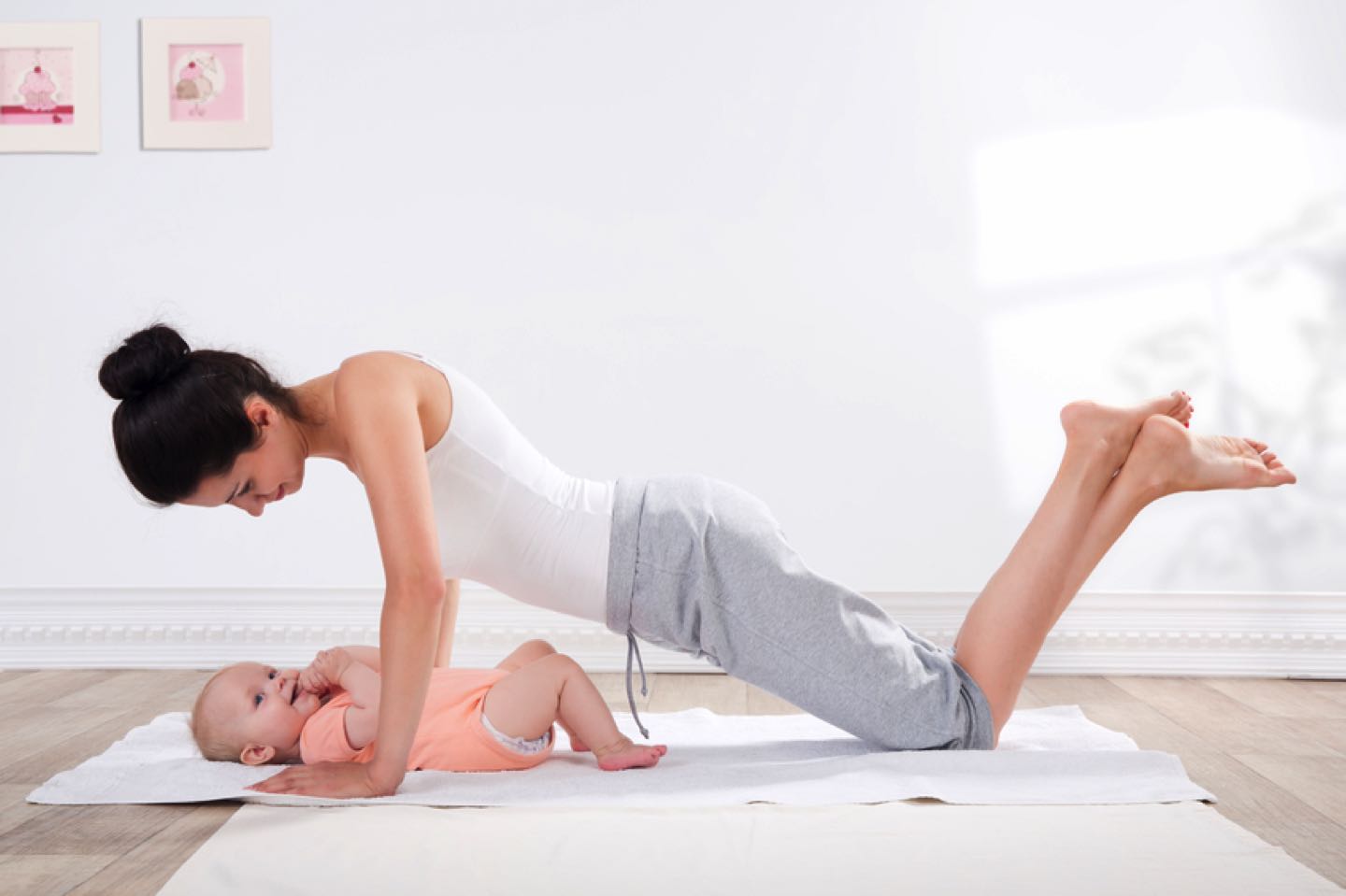
As the baby grows and gets heavier, you’re going to require more and more upper body strength to prevent getting shoulder and back pains. To gain more upper body strength, start off by doing modified push-ups (resting your knees on the floor) and once enough time has passed and you’ve become strong enough, you can perform a full push-up. When doing the modified push-ups, make sure you have the correct alignment: arms positioned under the shoulders a bit wider than the width of the shoulders, tuck your stomach inwards making sure you’re working your core and protecting your lumbar spine, and bend your knees at around 45 degrees angle.
Aim to do 3 sets of 10 push-ups.
Side plank
Side planks target your upper body, core and legs. Make sure your elbow is positioned in line with your shoulders, your core is tucked towards your spine, and your body is in a straight position. Alternate each side and try to last 20-30 seconds in each side plank.
Aim to do 3 sets on each side.
Normal plank
You can either do a modified plank (with your knees bent on the floor) or a full plank. It depends how ready your core muscles are. Bend your arms underneath your shoulders, hold your hands together in a prayer position and make sure your abs are tucked towards your spine to work your core and protect your pelvis and your back is straight. Do planks of 20-30 seconds and increase the time as you gain more strength.
Aim to do 3 sets.
As you can see, these are all exercises that you can do in the comfort of your home when the baby is napping. Or you can even have the baby lying on a mat next to you or even include your baby into the exercises. All these exercises are baby friendly!
Always remember to adjust the exercises and repetitions to your fitness level and always consult your doctor before doing exercise. The most important thing is to be patient and take things a day at a time.
Also, don’t forget to stretch your body throughout the day, as you will be spending a lot of time sitting and holding your baby. Try these stretching exercises that you can do at any point throughout the day to relieve tension.


